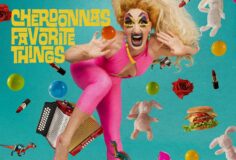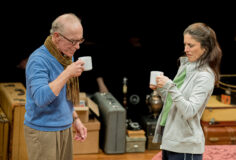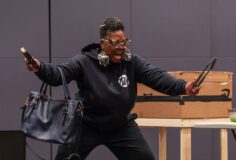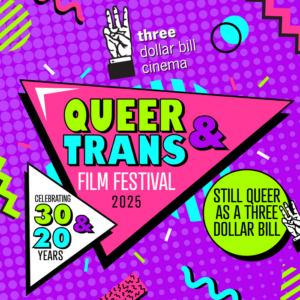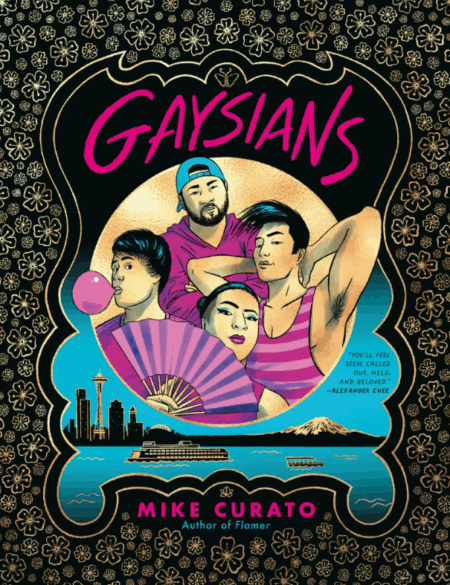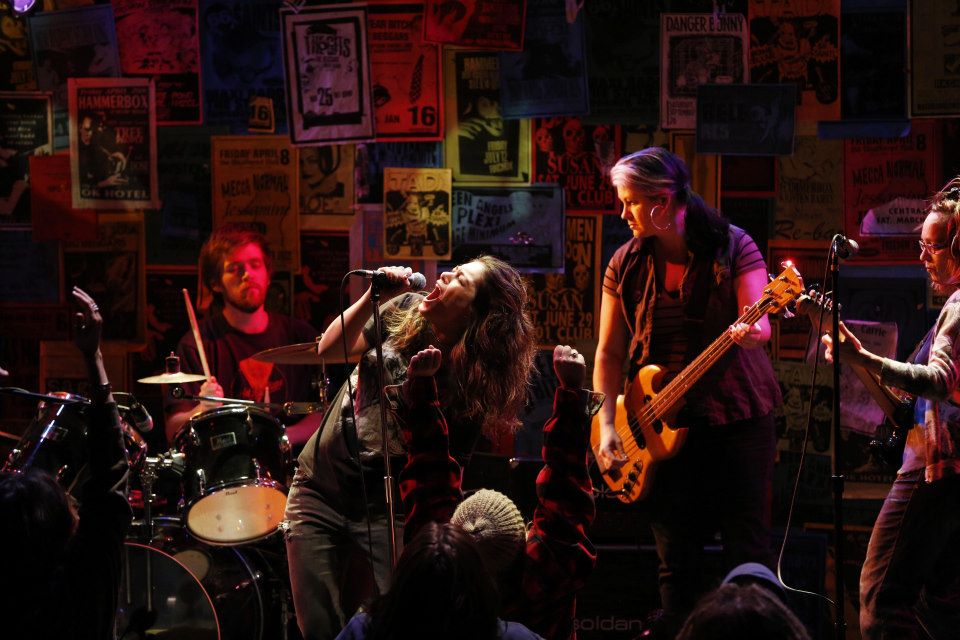
Eden Schwartz, singing, as young Ingrid in “These Streets” a new play that tells the story of the women of grunge rock, now playing at ACT through March 10.
Photo: © Stacey Wescott
Review: “These Streets” by Gretta Harley, Elizabeth Kenny, and Sarah Rudinoff. Produced by Harley Rudinoff Productions for ACT’s Central Heating Lab. Music Direction by Gretta Harley. Directed by Amy Poisson. With Sarah Rudinoff, John Q. Smith, Imogen Love, Elizabeth Kenny, Gina Malvestuto, Hollis Wong-Wear, Evan Crockett, Terri Weagant, Samie Detzer, Eden Schwartz and Peter Richards. Now through March 10, 2013 at the Falls Theater/ACT.
It’s rather surprising that Seattle hasn’t had a major theatrical work about the “Grunge” musical era of the late 1980s and early 1990s, when the disenfranchised rockers of the Pacific Northwest I-5 corridor gathered together in the seedy night clubs and bars of Portland, Olympia and Seattle to forge a new sound in rock and roll. But, Seattle was the center of the grunge community (or, to those who prefer it, the “Seattle sound”) and thousands of hungry musicians descended on Seattle to form hundreds of indie bands. By 1992/93, some of those bands, including Alice in Chains, Sound Garden, Pearl Jam and most of all, Nirvana had become huge, big label multi million record selling successes. The commercial and artistic success of grunge quickly killed the community spirit of the movement as jealousy, bitterness and disdain followed the material success and while the world embraced the angst ridden lyrics and power electric guitar chords of grunge, it also rather quickly backed away. The drug fueled culture of grunge and the many subsequent deaths associated with it, might have also helped kill the Seattle sound. The sudden emergence of Seattle as a major cultural and economic center, largely due to Microsoft and the growth of Starbucks and Amazon.com and the subsequent and ongoing gentrification that continues to the present, also helped mute that indie spirit. The suicide of Nirvana frontman Kurt Cobain in 1994 signaled the beginning of the end for grunge, a cultural and artistic musical revolution that actually flourished for a relatively short period of time as the hard edged punk/heavy metal influences of grunge were quickly replaced in the American cultural scene by the soft, soda pop melodies of Britney Spears, Justin Timberlake and every other safe mainstream artist of the last 15 years. Grunge was King for a very short period of time, but Seattle is still the holy Mecca for its subjects and fans.
Grunge was also unique because for the first time in the world of rock and roll music, women were an integral and vocal part of the Seattle sound, and while the only female superstar to come out of grunge was Courtney Love and her band Hole, (and, that was suspiciously viewed as Love was Kurt Cobain’s wife and not particularly popular in the community), numerous women musicians did contribute significantly to the sound and success of grunge. Not surprisingly, the work of those women has tended to be ignored, or at best, briefly mentioned in the annals of the grunge movement, but a few fans of those women, and the surviving women artists themselves, have been telling their story. One of those women, Gretta Harley, of the band Danger Gens has partnered with actress/singer Sarah Rudinoff and actress/playwright Elizabeth Kenny to tell an untold story of some of these women in their new play with music, “These Streets” currently playing at ACT as part of their Central Heating Lab. The trio of women have created a play focused on four different women of the era, (composites of actual people) that tell a story set both today, and 20 years ago during the height of the Grunge Movement with two sets of actors playing the characters in the two different time settings. Along with telling the stories of these women in the two different eras, the play also utilizes over 20 songs, both from the era and original songs written by Harley and Rudinoff, with an onstage rock band that includes Harley and famed local Seattle guitarist Ron Nine. “These Streets” is a lovingly created new work with a subject matter that is fascinating and ripe for dramatization that justly shines a spot light on these female artists and the terrific music they created.
“These Streets” is obviously created with much love and respect, but sadly, while these streets are paved with the best of intentions, the actual script of the play suffers from some cardboard characterizations, a wobbly and diffuse structure and construction, and some painfully banal dialogue. It reduces the story of the actual women rockers of Seattle to the level of a “Sex and the City” episode and replaces gritty reality with bickering and boyfriend woes and an overall arc that never reaches much further than the cliche of, “Man, it USED to be about the music! What happened, man?” (Replace “man” with an appropriate feminine equivalent…) While all three writer/performers of “These Streets” have experience as talented writers, much of that prior experience is in creating original solo works and not multi-character, time spanning, complexly structured plays. It’s the structure of “These Streets” that ultimately defeats the production, at times largely resembling a live version of a “Rolling Stone” article combined with a VH-1 “Behind the Music” special. It either abruptly jumps in time, or from character to character, or, perversely, rather vaguely moves from one scene to another without any definition or clarity. The writing isn’t much helped by the diffuse and uncertain direction by Amy Poisson with staging that is seldom clear or profound. And, while the music is the chief highlight of “These Streets”, there is a repetitive tendency to cut to a musical moment whenever the production seems “stuck” in its storytelling. Again, I hugely admire the dedication of this creative team and their subject matter, but “These Streets” would benefit from a major script over haul from a very experienced playwright and far stronger direction. It suffers from “Group Creation/We’re All Really Good Friends!” Syndrome and needs an infusion from a disciplined but politic theater professional unafraid to lay down some structure.
Again, the greatest strengths of “These Streets” are in its music and the performances of that music and all the performers are very good with a few standing out above the rest and able to rise above some of the cliches and banalities of their characters and dialogue. Ms Rudinoff gives her usual comically adept performance, part Earth Goddess/part wise cracking and song belting diva as Kyla, the more grounded and endearing member of the quartet…she’s obviously the “Carrie Bradshaw” character surrounded by the more neurotically inclined supporting characters. The younger version of Kyla is well played by actress/performer Hollis Wong-Wear though of the 5 younger/older pair ups for the major characters, Ms Wong-Wear is the least unlikely as the younger version of Ms Rudinoff both physically and emotionally…it’s tough to believe that her rather naive, younger version of Kyla segues into the wise-cracking and bigger voiced charms of Ms Rudinoff.
The other four younger/older pairings are far more believable with arguably the best being the matching of Terri Weagant and Imogen Love as respectively, the younger and current versions of Christine, the driven, hard working outsider of the four women, a native New Yorker who has a tough time adapting to the laid back ways of Seattle. Both physically and emotionally there is a strong connection between these two actresses, and the strength and power of their performances tend to dominate their scenes. It’s also helped by the fact that Christine has a more interestingly and complexly created character with more originality and depth. Both actresses are excellent, but Ms Love’s current Christine isn’t really given enough to do in the script, while Ms Weagant has multiple moments to shine both as an actress and a singer; she just about steals the show.
Co-writer Elizabeth Kenny is strong as Dez, the mouthy/opinionated/political character with Samie Detzer equally strong as her dreadlocked younger version. And, as the hard living/drinking/drugging Ingrid, both Gina Malvestuto as the current version, and Eden Schwartz as the younger, give appropriately hard living/drinking/drugging performances (and physically match each other the strongest) but the cliches of the role sometimes overwhelm the character who never veers very far from “endearing mess”.
There are male characters in “These Streets” and the two roles are played by three fine actors but the characters also never venture too far away from being “the required penis laden characters to propel the plot”. The character of Bryan serves as the quasi narrator bridging the two eras of the story together as the central male figure/friend in the lives of the quartet of female characters. Current Bryan is researching and recording an oral history project focusing on the women who rocked during the grunge era and is well-played by one of Seattle’s best actors, John Q. Smith. But, Mr. Smith is laden with some of the clunkiest dialogue in the play and most of it is essentially along the lines of “Man, it used to be about the music” and we never really get to dig too deep into his character or his psyche which is a waste of both Mr. Smith’s huge talent, and that of Evan Crockett who does a fine job as the younger (and a bit taller) version of Bryan. And, finally, Peter Richards is very good as the sweetly natured Jarrad, the purple haired companion/lover to the younger version of Christine…and, we won’t spoil anything about his character but will only remark, he’s the only character to not have a “current” version…
The design of “These Streets” is strong with a simple but effective representation of a hundred different grunge bar stages dominating much of the stage at the Falls Theater and well executed by Montana Tippet. As usual, Harmony Arnold has colorfully clad her cast in appropriately rich and authentically grungy costumes for the early 90’s set scenes, as well as the slightly more sedate contemporary looks for the current versions of the characters. Robert Aguilar’s lighting is appropriately rock n roll-y but there are scenes in the play where characters watch an offstage television and the lack of appropriately placed lighting to indicate that wash of changing light from a television set seemed to be a missed opportunity in an otherwise strong lighting design.
“These Streets” is a show with a lot of heart and terrific intent from a team of dedicated and very talented theater professionals, but it desperately needs a stronger script and more disciplined direction. The weakness of the play’s structure and the fact the material shies away from much grit or controversy ultimately harm the story and doesn’t allow it to live up to the potential of both the music and the fascinating subject matter…the show only really briefly touches on the serious amounts of drug addiction in the grunge community, and oddly never mentions or references the tragedy of Mia Zapata, the raped and murdered musician that inspired Gretta Harley and others to create “Home Alive” a self defense/anti violence program in her memory. The high death toll due to drug abuse (including women rockers) and the dangers of violence against women in the community seemed to be missed opportunities for this play.
Finally, while local audiences full of people who revere the material and remember the actual events of that time, cheer every mention of a Seattle musical landmark, and mourn the loss of most of those landmarks to gentrification, we wonder if this is a work that can ever have much of a life outside the radius of the I-5 corridor stretching from Portland to Vancouver BC. As it stands, the micro specificity of the material might condemn it to a very narrow niche audience. Can the rest of world embrace this potentially fascinating story?





